
Restorative food, purifying medicine, guardian.
Nettle is a constant friend. I find it wondrous that one plant can bring such richness to my life. It is a regular part of my diet, an essential tool in my medicine kit and a keeper of cultural teachings, both ancient and new. I mark seasonal changes by where nettle is in its life cycle. As the first young plants emerge from the winter soil, I rejoice the imminent return of spring. Nettle season is upon us! I have seen nettle touch people in deep and mysterious ways. My friend Valerie Segrest said she drank a cup of nettle tea and it changed her life. In a time of chaos, it grounded her, fortified her, and opened her to the plant world. Since then, plants have become the center of her work and her passion. I believe in the power of nettle.
(For Valerie’s blog on nettles visit www.feedingthespirit.org)
Other Names: Tlulu’qWay (Twana), Stinging Nettle, Urtica dioica
Identifying Nettle: Stinging nettle is a perennial herb with opposite deep green leaves with serrated edges and tiny greenish flowers. Stems are square. Plants grow 3-7 feet tall. The stalk and underside of leaves are covered with stinging hairs that rise from a gland containing formic acid. Nettle is common in streambeds, forests and disturbed areas with rich wet soil. You can find it from the coast into the mountains. Do not gather nettles in agricultural or industrial areas because they may absorb inorganic nitrites and heavy metals.
Nettles contain (are you ready for this?) formic acid in fresh plant, galacturonic acid, Vitamin C, histamine, 5-hydroxytryptamine, choline and acetylcholine, vitamins A and D, iron, sodium, potassium, phosphorus, calcium (29 times more than spinach), magnesium, silica, trace minerals and protein (more than beans). No wonder they are called a super food!
When and How to Harvest: Just in case you have not encountered nettles… they will sting you! You can use gloves or scissors to harvest. Once cooked or dried, nettles completely lose their sting. They are most potent when gathered in early spring before flowering, usually from March-May. To dry nettles, bundle them and hang them upside down in a dark dry place, or place them in a paper bag and rotate them every few days until dry. Use gloves when you strip the leaves off the stem. Store in a dry place like a glass jar, away from sunlight. In late summer or early fall the stems are gathered and made into a strong fiber.
Eating Nettles
Nettles are often called a “super food” because they are so high chlorophyll, vitamins, minerals, protein and amino acids. If you look at their mineral content compared to other healthy foods like spinach and kale, they are off the charts. For example, they are 29 times higher in Calcium and nine times higher in Iron than spinach.
Gather nettles to eat fresh when they are very young – usually about 4-8 inches tall. The whole above ground part can be eaten, stems and all. As they get older they become tough and the stalks develop strong fibers that are reminiscent of chewing on dental floss. Not recommended. Definitely do not harvest nettle for food after they flower as old leaves contain cystoliths that may irritate the kidneys. This compound is destroyed when the plant is dried, so gathering nettles after flowering is fine to prepare dried herb tea or powder. There are many ways to prepare nettles for food including:
- Boiling – boil nettles for 5-15 minutes. They can be added straight, added to dishes or frozen for alter use. The water can then be drunk as a tea.
- Canning – follow general instructions for canning spinach.
- Freezing – either steam or boil nettles until just cooked, rinse in cold water, let drain and place in freezer bags for later use.
- Sautéing – Sauté until they look fully cooked, usually about 5-8 minutes.
- Steaming – place nettles in a colander and steam for 5-10 minutes.
Cooked nettles can be eaten straight as a vegetable or added to quiches, casseroles, meat pies, egg scrambles, meat loaf, lasagna, etc. Your imagination is the limit. Here are a couple tried and true recipes I enjoy:
Basic Nettle Sauté
This is a standby in our house because it is quick, easy, and delicious. You can easily modify it to your taste by adding different spices or toppings. Chard, kale or dandelion greens also work well in this recipe.
- 1 small bag of nettle
- 2 tablespoons olive oil
- 1 small onion, chopped
- 2 cloves garlic, chopped
- 2 tablespoons balsamic vinegar or lemon juice
- Salt and pepper to taste
- *Optional – ½ cup feta cheese
Gather fresh greens, wash, and chop into small pieces with scissors. In a medium-sized sauté pan with a lid, sauté onions and garlic in olive oil until onions are translucent. Add nettles and vinegar or lemon juice. Cover for a couple of minutes then stir. Sauté until greens are tender – about 5 minutes. Add salt and pepper to taste. Sprinkle with fresh feta and serve.
Spring Nettle Soup
This savory spring soup will leave you feeling deeply nourished. Corn adds a natural sweetness while potatoes are filling and the nettle adds a rich broth flavor. If you blend it the color will be a lovely green. Enjoy!
- 1 grocery bag full of fresh nettles
- 3 tablespoons olive oil or butter
- 2 large onions, diced
- 2 cloves of garlic, chopped
- 8-10 cups water
- 4 potatoes, peeled and diced
- 2 cups corn, fresh or frozen
- Juice of 1 lemon
- Salt and pepper to taste
Wash nettles, cut finely with scissors and set aside. In a large soup pot sauté onions and garlic in olive oil for 3-5 minutes. Add water, potatoes, corn, and nettles then bring to a boil. Simmer until potatoes are tender, about 10 minutes. Blend all ingredients in a blender or a food processor (optional). Add lemon juice, salt and pepper to taste. Serves 4-6.
Nettle Pesto
Try tossing this with pasta, potatoes or cooked vegetables. It can also be used on crackers or fresh vegetables as a snack. Try making nettle bruschetta by spreading the pesto on sliced artisan bread with some extra Parmesan cheese sprinkled on top. Toast in the oven… mmm… heavenly.
- 1 small bag (about 6 cups) of young fresh nettles, rinsed
- 1 bunch basil, stems removed, washed and drained (about 2 cups leaves)
- ½ cup Parmesan or Romano cheese, grated
- 1/3-cup walnuts or pine nuts
- 1/3 cup of extra virgin olive oil
- 1 clove garlic, chopped
- 1 teaspoon lemon juice
- Salt and pepper to taste
Boil nettles in water (blanch) for 2-3 minutes to remove the sting. Drain, let cool and roughly chop. Place all ingredients in a food processor or blender. Blend until smooth. Add salt and pepper to taste. Place the pesto in a clean jar and pour a little extra olive oil over the top. Cover with a lid. This will keep for 2-3 weeks in the refrigerator.
Nettle Salmon Quiche
This quintessential Northwest dish is delicious and deeply satisfying. You can modify the ingredients based on what you have available. I have tried variations including sautéed mushrooms, caramelized onions, potatoes, and sausage.
Crust
- 1 and ¼ cups flour
- 1 stick cold butter, cubed
- 3 tablespoons cold water
- 1 egg yolk
Filling
- 1 small bag nettles, rinsed and cut
- 1 small onion, minced
- 2 cloves garlic, minced
- 3 eggs, plus 1 egg white.
- 1 and ½ cups whole milk
- 1-2 teaspoons rosemary
- ½ teaspoon salt
- ¼ teaspoon pepper
- 2/3 cup smoked salmon, torn into small pieces with bones removed
- Garnish with 1/4 cup grated Parmesan
Preheat oven to 375. To make crust, cut cold butter into small pieces. Mix with flour and rub together until it reaches the consistency of breadcrumbs. Stir in cold water and kneed until blended. Do not overwork the dough. Spread flour on a flax surface and roll the dough flat into a circle a couple inches larger in diameter than your pie pan. Roll the dough onto the rolling pin and then gently place into pie pan. Fold over the sides and mold into a crust shape. Glaze (brush) the bottom of the dough with an egg yolk (save white for egg and milk mixture). Prick with a fork in several places so the crust does not bubble. Bake about 8 minutes. When you remove the crust from oven push the slumping sides back up to the top of the pan with a round side of a spoon.
Sauté onions on medium high heat until translucent. Add garlic and cook 2 minutes. Add nettles and cook until deep green and wilted – about 5 minutes. In a mixing bowl whisk together eggs, milk, rosemary, salt and pepper. Spread nettle sauté and salmon evenly on the bottom of the piecrust. Cover with egg mixture. Bake until browned and set – about 30 minutes. Remove and immediately sprinkle with Parmesan cheese.
Other Recipe Ideas
Nettle Enchiladas with Green Salsa. Make enchiladas with the nettle sauté and jack cheese as a filling. Cover with green salsa and bake. So delicious!
Nettle, Sausage and Potato Soup. We like to sauté an onion, 2 links of andouille sausage and a couple cloves of garlic. Add chicken broth, chopped nettles and cubed potatoes. This warming soup is so satisfying!
Preserving Nettles
The ideal season to harvest nettles for food is short, so I recommend preserving them for use throughout the year. The easiest way to do that is to freeze them in batches in the spring. You do not need to eat nettles every day to enjoy their health benefits – even once a week is great medicine. I make about 15-20 bags for our family use. Fill a colander with the amount of nettle you think you will use for a typical dish. For me this is a medium sized colander. Wash the nettles. Boil a pot of water that is large enough to submerge the nettles. After rinsing the nettles place them in the boiling water and boil about 3 minutes – long enough that they are fully cooked. Remove them nettles from the water with a slotted spoon and submerge in a bowl of cold water to stop the cooking process. Remove with the slotted spoon, let drain a minute and then place in a freezer bag. Start your next batch in the boiling water and repeat. You can freeze many bags of nettle pretty quick this way. Do not throw away the precious water you cooked the nettles in! It makes delicious tea or soup broth.
Nettle Medicine
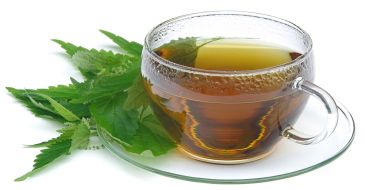 Nettles can help bring our bodies back to a state of balance. If someone is feeling debilitated or generally worn down, nettles are a good remedy. They are tonic to the liver, blood, and kidneys. Herbalists consider nettles a reliable diuretic that balances blood pH and filters waste from the body including uric acid. This can be especially useful for arthritis, gout, eczema and skin rashes.
Nettles can help bring our bodies back to a state of balance. If someone is feeling debilitated or generally worn down, nettles are a good remedy. They are tonic to the liver, blood, and kidneys. Herbalists consider nettles a reliable diuretic that balances blood pH and filters waste from the body including uric acid. This can be especially useful for arthritis, gout, eczema and skin rashes.
Nettles have a solid reputation as a haemostatic, or a remedy to stop bleeding. A strong decoction is traditionally used to treat wounds and hemorrhage. They can help build blood after menstruation, birth or other blood loss.
Many people say that nettles help to alleviate allergies. As a preventative for hay fever, drink 2 cups of nettle tea a day starting early in the spring and continuing into the allergy season. When nettles are fresh, tinctured or freeze-dried they have anti-histamine qualities that may be effective for acute allergic reactions. Nettles are both astringent and anti-inflammatory, which helps with the symptoms of allergies and many other complaints. Rosemary or horsetail with nettle are made into a tea and used as a hair rinse to make the hair glossy and stimulate growth.
Making Tea: Use 1 tablespoon of dried nettles per cup of boiled water. Cover with a lid. Steep 15 minutes to several hours. Drink 1-3 cups a day. You can make a large batch of tea and keep it in the refrigerator for up to 3 days. It is fine to drink the tea hot or cold. Nettle blends well with mint.
Other Uses
Nettles have been revered world wide throughout the ages for food, fiber, and medicine. They are also used as a dye with shades ranging from yellow to deep green. The fiber makes strong cordage and was used for making rope, fishing line and nets. Two thousand-year-old nettle clothing was found in China and it still remains intact.
Sting yourself on purpose… really? Yes, it is true. People do sting themselves with nettle to ease pain. This is officially called urticaiton and its roots go deep into history on several continents. Both in the Pacific Northwest and in Europe, people have stung themselves to cure arthritic joints and to stay awake and alert during battle or hunting. Traditional knowledge is now validated by scientific research. Compounds including histamine, acetylcholine and formic acid are injected into tissue causing an awakening of cellular responses, lymph flow, and nerve and capillary stimulation.
21 Comments
Trackbacks/Pingbacks
- Juicing spring herbs | amothershares - […] ingredients this time and I have been keen to use nettles due to their high nutrient content (more here) and…




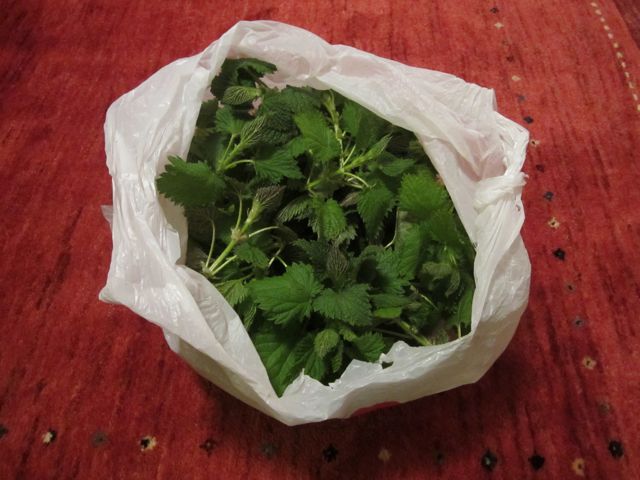

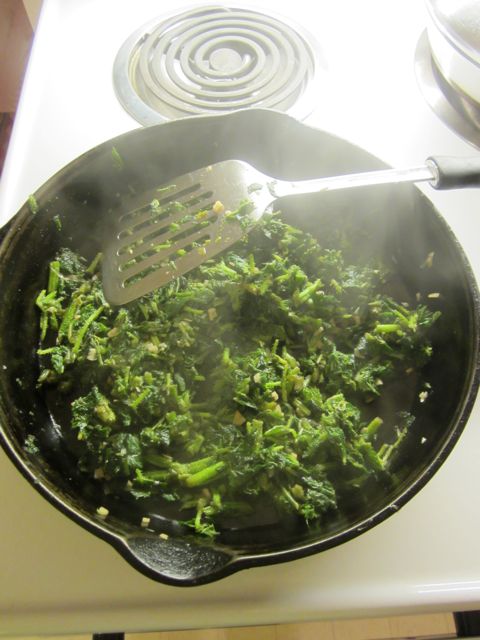
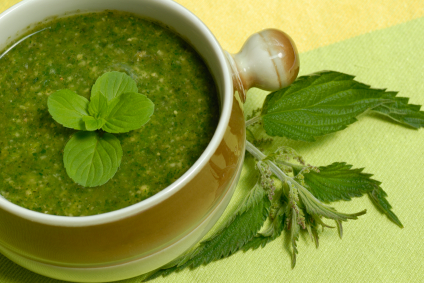
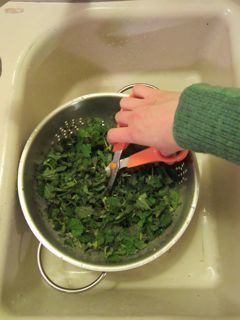



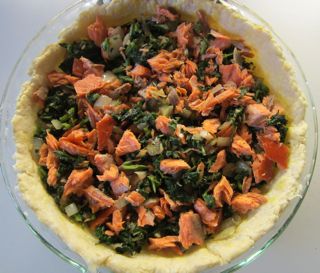
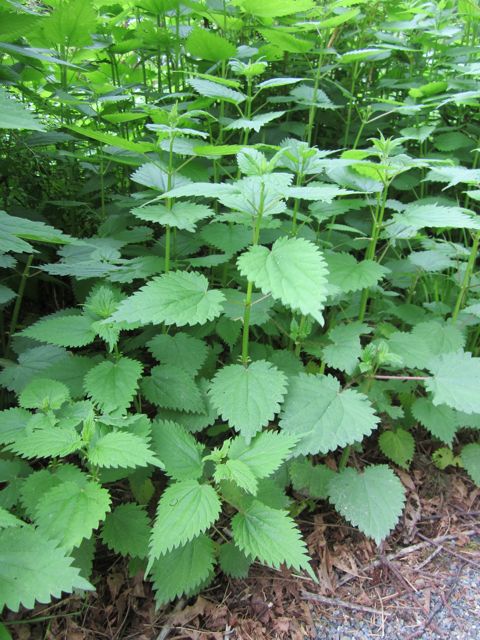
If I had realized what a gem this plant was, I would not have spent the last 10+ years trying to rid my yard of it! It grows like wildfire in my back yard!!! I have literally been mowing it down and pulling it up by the roots to try to rid my yard of this plant that stings me! I stumbled across a post saying that it had medicinal properties and started doing a little research. I can’t wait til the snow thaws and my yard is full of this wonderful plant so I can harvest it. It sounds like the answer to my prayers… I have horrible allergies, skin issues, and arthritis. I hope this stuff lives up to all the hype.
They say when you need a medicine plant it will find you. I have started exploring the plants I have in my yard, their names, herbal and energetic properties and am studying them one at a time. It has been a wonderful experience to find what I have right in my back yard growing under my own nose and ignoring. It has opened a new world to me.
Amazing how just a little knowledge can turn a weed into a food, eh? I began studying wild edibles and medicines last year and to my surprise, most of the weeds that I have spent my life removing, are the things that I needed the most. The Lord has made all things wonderful; but man just casts off the things that He brings forth from the earth for our service, as weeds.
Wow! What a great article! Thank you for sharing such a wealth of information and recipes too!! I look forward to reading your other blog posts and learning more about how when we take care of nature, it takes care of us!
I started drinking nettle tea today for my skin allergies. Hope it works!!
My Grandmother was a herbalist and would bring me with her while harvesting.
I have learned a lot from our adventures through the wilderness. I am glad there are sites of the same material to refresh my need for natural remedies. I have not taken any prescription or over the counter meds. for over 25 years. I see too many people suffering more from the band aid and the side effects than need be, when there is actually natural cures,that work. Thank you for bringing back sweet memories, spent with my Grandmother.
Wonderful memories, I’m sure!
How to keep freshly picked stinging nettfresh
How to krrp fresh stinging nettles fresh. Thank you
See the ideas on blanching and freezing nettles. You can also can them like spinach. Dried nettles can be used as a seasoning in soups and other dishes.
I can’t find any information on WHY you need to sip, rather than drink down like water, nettle infusion tea for the best effects. Does anyone know? I’ve read in many different sites about drinking nettle tea infusion that it must be sipped but theses sites never explain exactly WHY this needs to be done rather than drinking it down fast like you would drink water or many other drinks. Can anyone help me with this question?
I can not think of a reason why nettle tea needs to be sipped. I just drink it like regular tea.
Is september too late to harvest leaves for tea this winter? I feel like if I’m not eating them like a green they should still work.
We have some nice young nettles right now that are bright green, short and edible. The plants get tricked into thinking it is spring with these shorter and cooler days. It is fine to dry for tea and even to eat right now if it is tender.
I’ve been looking for an answer to my question…I’m a big nettle fan but a recent one, so I’m still watching it’s growth patterns and learning about it. I’ve noticed a bunch of “baby” or young nettle plants out there in the forests around now (November)…they seem a bit leggier and you can see the exposed runners between the plants easier than in the spring. Are these just the old nettle plants from throughout the year, just the ones left? Or are they new growth from seed that fell early? If so, can they be eaten fresh? Should they be left alone till next spring?
Also…when is the best time to harvest nettle seed?
Thank you for any information you may have!!!
And it is true, Jan, nettle does find you 🙂
Hi Grace. The nettles that are out now are often sprouting from fallen stems or are a second growth. Many plants are tricked into new growth in this season because the days are the same length and the temperature is similar to spring. If they are young and tender, they are fine to eat. Once we get a frost they will die back.The seeds are best harvested in summer when they are fully developed and come off easily with your hand. So glad you are developing a good relationship with nettle!
This is great info! I have a back yard full after the first rain. Looking forward to harvesting now instead of hoeing and not receiving the benefits of this plant.
Thanks so much for all the helpful info. I have nettle all around me, going to try some in the spring. Had no idea the nettle I avoid on my summer walks through the woods could be beneficial!
Hi, just wondering, can this awesome tea be too much? Can I take more than a cup/glass a day? Is it better effective on an empty stomach or does anytime work?
I think 2-3 cups of tea a day is great and you can drink it anytime, hot or cold. I think of nettles as a green vegetable.
Very good information. Lucky me I came across your site by chance (stumbleupon).
I’ve book marked it for later!